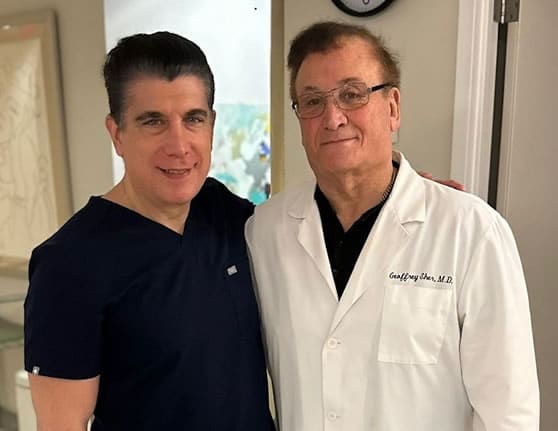Answer:
Here is some information on : Previous vasectomy and IVF; Gender selection and Endometriosis and infertility.
We should talk,. call Patti Converse (702-533-2691) and set up an online consultation with me.
1. GENDER SELECTION
Couples have for centuries sought to influence the gender of their offspring. More than seven centuries ago the ancient Chinese developed a birth calendar said to be able to predict gender on the basis of when conception occurred. Later, the ancient Greeks suggested that by lying on her right side during intercourse, a woman could improve the likelihood of having a male child. And 300 years ago, the French suggested that placing a ligature around the right testicle would improve the chance of having a male child.
More recently in the U.S., methods such as timing intercourse, assuming different positions during sex, and (relatively recently) employing rapid sperm centrifugation in an attempt to separate male chromosome-bearing sperm from female sperm prior to artificial insemination were proposed. The fact is that none of these (as well as many other) such anecdotal assertions have been shown to have any real validity.
Currently, in spite of several well described medical approaches, the indisputable fact has emerged that it is only by way of IVF that reliable sex selection can be achieved. This allows for embryos to be screened for gender through preimplantation genetic diagnosis prior to transferring the embryo(s) of the desired gender to the uterus.
Nevertheless, it is an inescapable reality that the very idea of medical sex selection challenges moral and ethical beliefs at their very foundation. Many hold that the growing popularity of gender selection solely for the convenience of altering a family’s gender balance represents an unwanted example of how assisted reproductive technology is subject to abuse…and thus it should be outlawed. They also see it as an example of a disturbing trend towards “designer babies” where genetic engineering could be used to manipulate the intellect, body configuration, build, height, and the talents of future offspring. This assertion is commonly followed by the tantalizing question as to where all this would end and whether we as a society “would really want to live in such a world.”
There is, however, one clear exception to the apparent across-the-board opposition to sex selection that is well worthy of mention. This applies in cases where sex selection is used to avoid the occurrence of a serious medical disorder that selectively affects one gender or the other (e.g., Hemophilia, a life threatening bleeding disorder that selectively affects male offspring).
EVALUATING CURRENTLY USED METHODS FOR SEX SELECTION
A. SPERM GRADIENT METHODOLOGY (discredited because of a lack of reliability)
This is one of the simplest methods that still (unfortunately) remains in widespread use. Here sperm is rapidly spun down (centrifuged) in the hope of separating the male sperm (those with Y-chromosomes) from the female sperm (those with X-chromosomes). It relies on the assumption that the X chromosome makes sperm heavier, allowing for separation of male from female chromosome-bearing sperm. Though this method is often touted as a low cost method for sex selection, the truth is that it simply does not work!
B. FLOW CYTOMETRIC TESTING BY THE MICROSORT METHOD (discredited because of a lack of reliability)
This method which is now somewhat discredited by the FDA employedthe use of a fluorescent dye that adheres to genetic material within the sperm. It was based on the premise that because X-bearing sperm contain more genetic material, these sperm were supposed to pick up more dye than Y-bearing sperm. Thereupon, X and Y bearing sperm are then separated into two groups and used for intrauterine insemination (IUI) or IVF. This method was touted as yielding a 60% to 70% accuracy rate with IUI. This has not been adequately confirmed and in my personal experience its reliability in the IVF setting has been questionable to say the least. The Microsort technique is to my knowledge not presently being offered in the United States.
C. IVF
Preimplantation Genetic Diagnosis (PGD) involves the removal of one or more cells from an embryo, for chromosomal or genetic analysis. The most widely used and he most reliable PGD method for gender selection is fluorescence in-situ-hybridization (FISH). However, this technique does not identify all 23 pairs of chromosomes in the embryo’s cells. At best it can well identify 12. Thus, while FISH provides an excellent method for gender selection and for identification of structural chromosomal aberrations, it is not a reliable method for diagnosing embryo aneuploidy (“competency”). Conversely, another PGD method, next generation gene sequencing (NGS) which does assess all the embryo’s chromosomes can be used for both detecting all the embryo’s chromosomes and thus can determine embryo “competency” reliably. It also reliably identifies gender. However, while NGS is very bit as reliable as FISH for gender selection, FISH can be done in fresh cycles (i.e. the ET is done in the same cycle as that in which the ER is done), while NGS requires time for testing that requires Staggered IVF (St-IVF) in which the embryos are biopsied on day 3 or day 5-6 (post-fertilization) and the blastocysts are ultrarapidly frozen (vitrified) and allowed to proceed in culture to blastocysts whereupon they are ultra-rapidly frozen (vitrified) and are then held for transfer in a subsequent cycle.
Upon completion of FISH, which takes about 24-36 hours, the couple can select which embryo(s) they will transfer to the uterus. If pregnancy results, there is almost a 100% chance it will result in the desired gender. If NGS is used, the degree of accuracy in diagnosing gender, is as reliable as is FISH but in addition, NGS provides information on the entire karyotype (all 23 pairs of chromosomes) which is extremely beneficial because it assesses embryo “competency, while FISH does not.
PERSONAL OPINION:
Sex selection done purely for family balancing is somewhat controversial, raising concern that if widely accessible and freely available, such practice could distort the natural sex ratio, leading to a population gender imbalance. However, for this to happen, there would have to be a significant population preference for sex selection. In reality, the contrary seems to apply, since studies conducted in western societies discount these concerns. In fact, the relatively high cost of IVF with the added cost of gender selection in the United States makes it unlikely that the demand would ever become large enough to impact overall population gender balance. In addition, several studies done in Western countries have shown that the majority of people do not seem to be concerned about the gender of their offspring, and that with a few notable exceptions, gender preference does not appear to be slanted in the direction of either male or female. Thus, from a practical standpoint, such concerns are overstated.
Given that in the United States most couples do not care about the gender of their offspring, and only a minority are interested in selecting the sex of their children there is currently no risk that IVF sex-selection will impact the population gender balance. Thus, in my opinion by and large, freedom of choice should prevail and a service for sex selection should be freely available
So, in my personal practice, I absolutely do offer gender selection in the following circumstances.
- Medical Indications for Gender Selection:
- For cases associated with
- sex-linked genetic disorders or,
- serious genetic disorders that are more likely to occur in one gender or the other.
- Non-Medical Family balancing
- For couples who have at least one child of the opposite gender to that which they choose for their IVF embryo transfer and,
- For those women who do not have any children at all but prefer to have a child of one or the other gender.
2.PRIOR VASECTOMY
Men with no sperm in their ejaculates (azoospermia) whether due to non-obstructive or obstructive (usually post-vasectomy) causes, can have their sperm accessed surgically and still propagate pregnancies. There are 2 methods by which this can be achieved. : 1) TESE (testicular sperm extraction), where a biopsy of the testis is done or, 2) TESA (testicular sperm aspiration), which involves introducing a needle into the testis and aspirating fluid and tissue. Both methods can be conducted under local anesthesia and both will provide sperm-containing tissue and fluid for immediate processing and fertilization (using ICSI) or cryostorage for future use. However, the question is: Which method yields better results. An Israeli study performed on men with non-obstructive azoospermia, conducted about a decade ago, compared the results of TESE with those from TESA in the same patients and found TESE to be the preferred approach.
TSE/TESA is the preferred method for accessing sperm in men with azoospermia. By far the commonest indication for using this approach is post-vasectomy obstructive azoospermia where the use of TESE/TESA is far more successful and uncomplicated than is the alternative of having the man undergo surgical reversal. In fact, TESE/TESA yields a comparable IVF birth rate as for controls where normal sperm derived through masturbation is used. The approach is simple, relatively low-cost, and safe. In most cases, it is relatively painless and has a low complication rate. Moreover, in post-vasectomy men, it avoids the need for riskier and painful surgery designed to reconnect sperm ducts (vasa deferentia) while enabling the man to retain his chosen method of contraception after having propagated another pregnancy. In addition surgical vasectomy often fails to successfully reestablished duct patency and even when successful it often results in the subsequent reocclusion of the sperm ducts due to scar tissue formation. Moreover, in a large percentage of cases where vasectomy reversal was performed > 5 years after the vasectomy antisperm antibodies develop and this will almost always preclude subsequent natural conception even in cases where surgery had reestablished duct patency.
While in some cases of non-obstructive azoospermia, TESA/TESE will yield sperm capable of achieving fertilization through ICSI and also subsequent viable pregnancies, success rates are low. However, in such cases, this approach yields the only possibility of the male partner participating genetically in propagating pregnancy.
3. ENDOMETRIOSIS AND INFERTILITY
When women with infertility due to endometriosis seek treatment, they are all too often advised to first try ovarian stimulation (ovulation Induction) with intrauterine insemination (IUI) ………as if to say that this would be just as likely to result in a baby as would in vitro fertilization (IVF). Nothing could be further from reality It is time to set the record straight. And hence this communication!
Bear in mind that the cost of treatment comprises both financial and emotional components and that it is the cost of having a baby rather than cost of a procedure. Then consider the fact that regardless of her age or the severity of the condition, women with infertility due to endometriosis are several fold more likely to have a baby per treatment cycle of IVF than with IUI. It follows that there is a distinct advantage in doing IVF first, rather than as a last resort.
So then, why is it that ovulation induction with or without IUI is routinely offered proposed preferentially to women with mild to moderately severe endometriosis? Could it in part be due to the fact that most practicing doctors do not provide IVF services but are indeed remunerated for ovarian stimulation and IUI services and are thus economically incentivized to offer IUI as a first line approach? Or is because of the often erroneous belief that the use of fertility drugs will in all cases induce the release (ovulation) of multiple eggs at a time and thereby increase the chance of a pregnancy. The truth however is that while normally ovulating women (the majority of women who have mild to moderately severe endometriosis) respond to ovarian stimulation with fertility drugs by forming multiple follicles, they rarely ovulate > 1 (or at most 2) egg at a time. This is because such women usually only develop a single dominant follicle which upon ovulating leaves the others intact. This is the reason why normally ovulating women who undergo ovulation induction usually will not experience improved pregnancy potential, nor will they have a marked increase in multiple pregnancies. Conversely, non-ovulating women (as well as those with dysfunctional ovulation) who undergo ovulation induction, almost always develop multiple large follicles that tend to ovulate in unison. This increases the potential to conceive al let me take a stab at explaining why IVF is more successful than IUI or surgical correction in the treatment of endometriosis-related infertility:
- The toxic pelvic factor: Endometriosis is a condition where the lining of the uterus (the endometrium) grows outside the uterus. While this process begins early in the reproductive life of a woman, with notable exceptions, it only becomes manifest in the 2ndhalf of her reproductive life. After some time, these deposits bleed and when the blood absorbs it leaves a visible pigment that can be identified upon surgical exposure of the pelvis. Such endometriotic deposits invariably produce and release toxins” into the pelvic secretions that coat the surface of the membrane (the peritoneum) that envelops all abdominal and pelvic organs, including the uterus, tubes and ovaries. These toxins are referred to as “the peritoneal factor”. Following ovulation, the egg(s) must pass from the ovary (ies), through these toxic secretions to reach the sperm lying in wait in the outer part the fallopian tube (s) tube(s) where, the sperm lie in waiting. In the process of going from the ovary(ies) to the Fallopian tube(s) these eggs become exposed to the “peritoneal toxins” which alter s the envelopment of the egg (i.e. zona pellucida) making it much less receptive to being fertilized by sperm. As a consequence, if they are chromosomally normal such eggs are rendered much less likely to be successfully fertilized. Since almost all women with endometriosis have this problem, it is not difficult to understand why they are far less likely to conceive following ovulation (whether natural or induced through ovulation induction). This “toxic peritoneal factor impacts on eggs that are ovulated whether spontaneously (as in natural cycles) or following the use of fertility drugs and serves to explain why the chance of pregnancy is so significantly reduced in normally ovulating women with endometriosis.
- The Immunologic Factor: About one third of women who have endometriosis will also have an immunologic implantation dysfunction (IID) linked to activation of uterine natural killer cells (NKa). This will require selective immunotherapy with Intralipid infusions, and/or heparinoids (e.g. Clexane/Lovenox) that is much more effectively implemented in combination with IVF.
- Surgical treatment of mild to moderate endometriosis does not usually improve pregnancy potential:. The reason is that endometriosis can be considered to be a “work in progress”. New lesions are constantly developing. So it is that for every endometriotic seen there are usually many non-pigmented deposits that are in the process of evolving but are not yet visible to the naked eye and such evolving (non-visible) lesions can also release the same “toxins that compromise fertilization. Accordingly, even after surgical removal of all visible lesions the invisible ones continue to release “toxins” and retain the ability to compromise natural fertilization. It also explains why surgery to remove endometriotic deposits in women with mild to moderate endometriosis usually will fail to significantly improve pregnancy generating potential. In contrast, IVF, by removing eggs from the ovaries prior to ovulation, fertilizing these outside of the body and then transferring the resulting embryo(s) to the uterus, bypasses the toxic pelvic environment and is therefore is the treatment of choice in cases of endometriosis-related infertility.
- Ovarian Endometriomas: Women, who have advanced endometriosis, often have endometriotic ovarian cysts, known as endometriomas. These cysts contain decomposed menstrual blood that looks like melted chocolate…hence the name “chocolate cysts”. These space occupying lesions can activate ovarian connective tissue (stroma or theca) resulting in an overproduction of male hormones (especially testosterone). An excess of ovarian testosterone can severely compromise follicle and egg development in the affected ovary. Thus there are two reasons for treating endometriomas. The first is to alleviate symptoms and the second is to optimize egg and embryo quality. Conventional treatment of endometriomas involves surgical drainage of the cyst contents with subsequent removal of the cyst wall (usually by laparoscopy), increasing the risk of surgical complications. We recently reported on a new, effective and safe outpatient approach to treating endometriomas in women planning to undergo IVF. We termed the treatment ovarian Sclerotherapy. The process involves; needle aspiration of the “chocolate colored liquid content of the endometriotic cyst, followed by the injection of 5% tetracycline hydrochloride into the cyst cavity. Such treatment will, more than 75% of the time result in disappearance of the lesion within 6-8 weeks. Ovarian sclerotherapy can be performed under local anesthesia or under conscious sedation. It is a safe and effective alternative to surgery for definitive treatment of recurrent ovarian endometriomas in a select group of patients planning to undergo IVF
I am not suggesting that all women with infertility-related endometriosis should automatically resort to IVF. Quite to the contrary…. In spite of having reduced fertility potential, many women with mild to moderate endometriosis can and do go on to conceive on their own (without treatment). It is just that the chance of this happening is so is much lower than normal.
IN SUMMARY: For young ovulating women (< 35 years of age ) with endometriosis, who have normal reproductive anatomy and have fertile male partners, expectant treatment is often preferable to IUI or IVF. However, for older women, women who (regardless of their age) have any additional factor (e.g. pelvic adhesions, ovarian endometriomas, male infertility, IID or diminished ovarian reserve-DOR) IVF should be the primary treatment of choice.
I strongly recommend that you visit www.DrGeoffreySherIVF.com. Then go to my Blog and access the “search bar”. Type in the titles of any/all of the articles listed below, one by one. “Click” and you will immediately be taken to those you select. Please also take the time to post any questions or comments with the full expectation that I will (as always) respond promptly.
- The IVF Journey: The importance of “Planning the Trip” Before Taking the Ride”
- Controlled Ovarian Stimulation (COS) for IVF: Selecting the ideal protocol
- IVF: Factors Affecting Egg/Embryo “competency” during Controlled Ovarian Stimulation (COS)
- The Fundamental Requirements For Achieving Optimal IVF Success
- Use of GnRH Antagonists (Ganirelix/Cetrotide/Orgalutron) in IVF-Ovarian Stimulation Protocols.
- Anti Mullerian Hormone (AMH) Measurement to Assess Ovarian Reserve and Design the Optimal Protocol for Controlled Ovarian Stimulation (COS) in IVF:
- The Role of Immunologic Implantation Dysfunction (IID) & Infertility (IID): PART 1-Background
- Immunologic Implantation Dysfunction (IID) & Infertility (IID): PART 2- Making a Diagnosis
- Immunologic Dysfunction (IID) & Infertility (IID): PART 3-Treatment
- Thyroid autoantibodies and Immunologic Implantation Dysfunction (IID)
- Immunologic Implantation Dysfunction: Importance of Meticulous Evaluation and Strategic Management: (Case Report)
- Intralipid and IVIG therapy: Understanding the Basis for its use in the Treatment of Immunologic Implantation Dysfunction (IID)
- Intralipid (IL) Administration in IVF: It’s Composition; how it Works; Administration; Side-effects; Reactions and Precautions
- Natural Killer Cell Activation (NKa) and Immunologic Implantation Dysfunction in IVF: The Controversy!
- Treating Out-of-State and Out-of-Country Patients at Sher-IVF in Las Vegas
- Should IVF Treatment Cycles be provided uninterrupted or be Conducted in 7-12 Pre-scheduled “Batches” per Year
- A personalized, stepwise approach to IVF
- How Many Embryos should be transferred: A Critical Decision in IVF?
- Endometriosis and Immunologic Implantation Dysfunction (IID) and IVF
- Endometriosis and Infertility: Why IVF Rather than IUI or Surgery Should be the Treatment of Choice.
- Endometriosis and Infertility: The Influence of Age and Severity on Treatment Options
- Early -Endometriosis-related Infertility: Ovulation Induction (with or without Intrauterine Insemination) and Reproductive Surgery Versus IVF
- Treating Ovarian Endometriomas with Sclerotherapy.
- Effect of Advanced Endometriosis with Endometriotic cysts (Endometriomas) on IVF Outcome & Treatment Options.
- Deciding Between Intrauterine Insemination (IUI) and In Vitro Fertilization (IVF).
- Intrauterine Insemination (IUI): Who Needs it & who Does Not: Pro’s &
- Induction of Ovulation with Clomiphene Citrate: Mode of Action, Indications, Benefits, Limitations and Contraindications for its use
- Clomiphene Induction of Ovulation: Its Use and Misuse!
______________________________________________________
ADDENDUM: PLEASE READ!!
INTRODUCING SHER FERTILITY SOLUTIONS (SFS)
Founded in April 2019, Sher Fertility Solutions (SFS) offers online (Skype/FaceTime) consultations to patients from > 40 different countries. All consultations are followed by a detailed written report presenting my personal recommendations for treatment of what often constitute complex Reproductive Issues.
If you wish to schedule an online consultation with me, please contact my assistant (Patti Converse) by phone (800-780-7437/702-533-2691), email (concierge@SherIVF.com) or, enroll online on then home-page of my website (www.SherIVF.com).
PLEASE SPREAD THE WORD ABOUT SFS!
Geoff Sher








